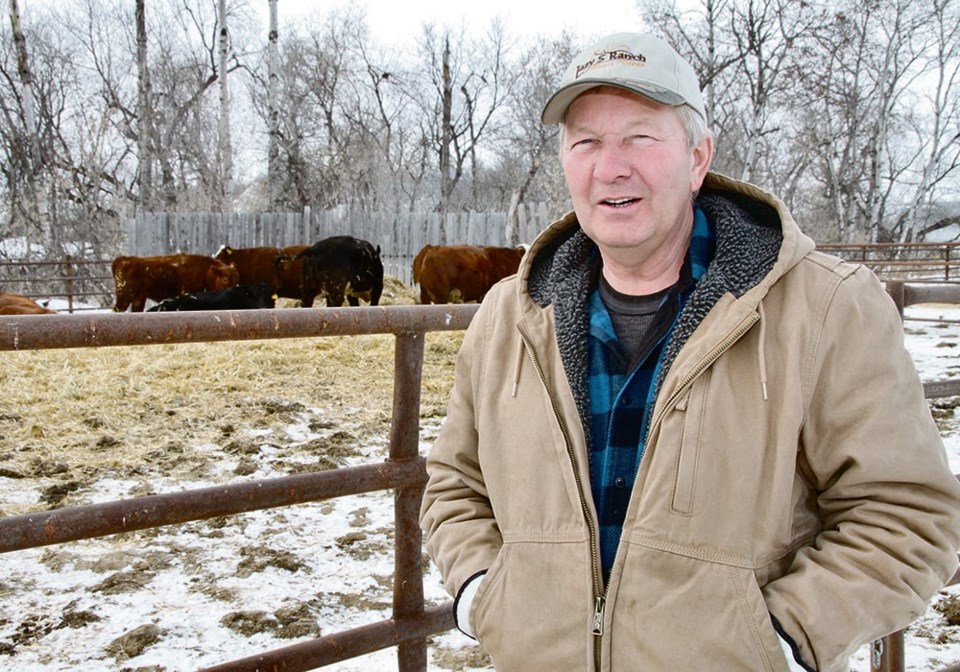WESTERN PRODUCER— When Martin Unrau was president of the Canadian Cattle Association about a decade ago, he frequently delivered the same message to politicians and bureaucrats in Ottawa.
It was simple: government shouldn’t favour one sector within agriculture over other sectors.
Most of the time, whoever was listening would nod and agree, but nothing would happen.
The policies of picking winners would continue.
“For years, government policies have given advantages to one sector over another,” said Unrau, who runs a 600 head cow-calf farm near MacGregor, Man., with son Garett, wife Roxie and daughter-in-law Heidi.
“It’s always been that way…. And that’s exactly what is still happening.”
Unrau was CCA president from 2012-14 and also served as vice-president of the CCA. He was president of the Manitoba Cattle Producers Association in the early 2000s. Besides raising cattle, he also has about 1,400 acres of crop land.
In early March, at his farm south of MacGregor, Unrau said agricultural policies in Canada still favour grain production over livestock. A prime example is subsidized crop insurance.
“On our grain side, I can buy insurance on my canola that will cover my expenses,” he said.
“In the cattle industry there’s absolutely nothing like that…. We have price insurance that’s fully paid by us.”
What Unrau means is that grain producers don’t cover the full cost of crop insurance.
“Under the Canadian Agricultural Partnership, AgriInsurance premiums for most programs are shared 40 percent by participating producers, 36 percent by the Government of Canada and 24 percent by the Manitoba government,” says a Manitoba government press release.
“Administrative expenses are paid 60 percent by Canada and 40 percent by Manitoba.”
For farmers like Unrau who grow crops and raise cattle, such subsidies encourage certain behaviours.
“In all reality, I should be selling my cows today and I should be having just canola on all my land. And I’d be making way more money and I’d be insured,” he said. “This is what I mean by government policy.”
Unrau said grain farmers can also get crop insurance on marginal farmland with no track record of growing crops.
“I’ve always said, if somebody breaks up some new land, there should be a five-year (wait) before you can even get crop insurance.”
Unrau is also concerned that the federal government, and some provincial governments, have invested hundreds of millions into the plant protein industry.
In February, the feds gave an additional $150 million to Protein Industries Canada, an organization with a mission of transforming Canada’s ag and agri-food sector so the country becomes “a global leader in plant-based foods and ingredients.”
The investment may benefit Canada’s agri-food sector in the long run, but such strategies do encourage farmers to take land that is better suited for livestock and convert it to cropland, Unrau said.
“When we promote things like plant-based proteins, we start tearing up fragile land … which economically doesn’t work in the long term,” he said.
“I can go up to Amaranth (west of Lake Manitoba) and show you thousands of acres of absolutely marginal stuff that is now –°¿∂ ”∆µ cropped.”
There is some merit to Unrau’s position, said Alfons Weersink, a University of Guelph agricultural economist who studies agri-environmental policy and production economics.
“There is no equivalent of crop insurance for livestock farmers. Thus, there is some argument that a safety net provides an incentive to convert marginal land from pasture to crops,” he said in an email.
However, there are business risk management programs for all types of farmers, including beef producers, he added.
More importantly, the market and commodity prices have a much larger influence on farmer behaviour.
“I think high crop prices (and decent weather) are the major reason for this conversion,” he said.
“While government programs play some role, the difference in relative returns from the market is a major driver.”
Weersink is correct. When canola is priced at $18 per bushel, the impact on farmland use in Western Canada is massive. Still, it’s difficult to sustain or expand cattle production in Canada when government policies favour one type of farming over another, Unrau said.
“For the beef industry to move ahead, the policies have to be done right.”




